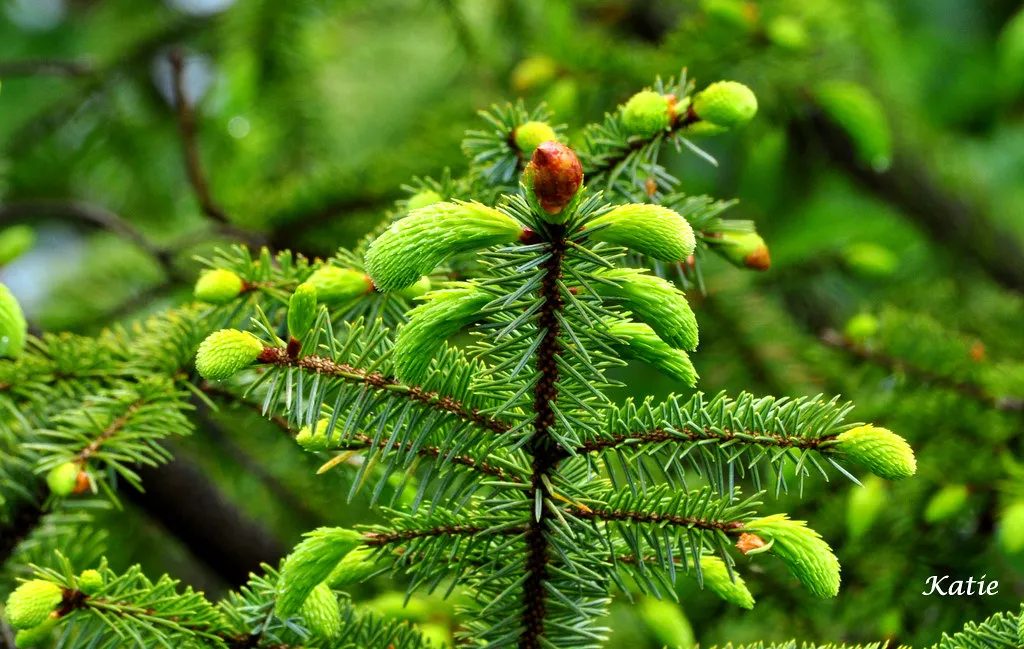Nasturtiums are easy to grow and provide vibrant, colorful blooms. They thrive in poor soil and need minimal care.
Nasturtiums are a gardener’s delight, known for their striking flowers and ease of cultivation. These vibrant plants bring a splash of color to any garden, making them a favorite among both novice and experienced gardeners. Nasturtiums flourish in well-drained soil and full sun, requiring little more than regular watering.
Their edible flowers add a peppery zest to salads, while their leaves can be used as a natural pest deterrent. Whether planted in garden beds, containers, or as ground cover, nasturtiums promise a stunning display with minimal effort. Their low-maintenance nature and visual appeal make them a must-have in any garden.

Credit: gardeningnirvana.com
Introduction To Nasturtiums
Nasturtiums are vibrant, easy-to-grow flowers. They brighten any garden with their colorful blooms. They are perfect for beginner gardeners.
These flowers aren’t just pretty. They are also edible and add a peppery taste to salads. Nasturtiums are low-maintenance and grow quickly. They can thrive in poor soil conditions.
Brief History
Nasturtiums have a rich history. They originated in South America. Spanish conquistadors brought them to Europe in the 16th century. They quickly became popular across the continent.
In the past, people used nasturtiums for medicinal purposes. They treated wounds and infections. Today, they are mainly grown for their beauty and culinary uses.
Popular Varieties
| Variety | Description |
|---|---|
| Empress of India | Dark red flowers, compact growth, great for containers. |
| Alaska | Variegated leaves, mix of colors, striking appearance. |
| Jewel Mix | Bright, double blooms, variety of colors, bushy plants. |
| Trailing Mixed | Long vines, ideal for hanging baskets, vibrant colors. |
There are many other varieties. Each has its unique charm. Choose the one that fits your garden best.
Choosing The Right Location
Creating a Nasturtium Nirvana in your garden starts with choosing the right location. Nasturtiums are easy to grow, but they thrive best in specific conditions. Follow these tips to ensure your nasturtiums bloom vibrantly.
Sunlight Requirements
Nasturtiums love the sun. They need at least six hours of direct sunlight daily. Plant them in areas with plenty of sunlight. Avoid shady spots, as they may hinder growth and blooming.
Soil Preferences
Nasturtiums prefer well-drained soil. They are not picky, but they thrive in poorer soils. Too much nutrient-rich soil can lead to more leaves than flowers.
Here is a quick soil guide:
| Soil Type | Effect on Nasturtiums |
|---|---|
| Sandy Soil | Good drainage, promotes flowering |
| Clay Soil | Poor drainage, stunts growth |
| Loamy Soil | Well-balanced, supports healthy growth |
Keep the soil slightly dry. Overwatering can cause root rot. Use a well-draining soil mix to ensure proper drainage.
Planting Nasturtiums
Nasturtiums are not only beautiful but also easy to grow. They add vibrant colors to any garden with their bright flowers. Planting nasturtiums is straightforward and rewarding.
Starting From Seeds
Nasturtium seeds are large and easy to handle, making them perfect for beginners. Direct sowing is the best method. Follow these steps:
- Choose a sunny spot with well-draining soil.
- Soak the seeds overnight to speed up germination.
- Sow seeds 1/2 inch deep and 12 inches apart.
- Water the area gently but thoroughly.
- Expect seedlings to appear in 7-10 days.
For an earlier start, you can start seeds indoors 4-6 weeks before the last frost date. Use small pots and keep the soil moist.
Transplanting Tips
Transplanting nasturtiums is easy if you follow a few tips. Ensure the seedlings are strong before moving them outside. Here’s how:
- Harden off seedlings by exposing them to outside conditions gradually.
- Choose a cloudy day or transplant in the evening.
- Dig holes twice the size of the root ball.
- Gently place the seedlings in the holes.
- Fill in with soil and water well.
Spacing is crucial for healthy growth. Keep plants 12-18 inches apart for optimal air circulation.
Use these tips to enjoy a Nasturtium Nirvana in your garden!
Watering Guidelines
Proper watering is key to growing vibrant nasturtiums. It ensures lush growth and abundant blooms. Understanding how to water these plants correctly will help you achieve a Nasturtium Nirvana.
Frequency Of Watering
Nasturtiums thrive with a balanced watering schedule. Water them deeply but infrequently. This encourages strong root development.
- Water nasturtiums once a week during mild weather.
- Increase frequency to twice a week during hot, dry spells.
- Ensure the soil dries out between watering sessions.
Use a soaker hose or drip irrigation for even moisture distribution.
Signs Of Overwatering
Overwatering can harm nasturtiums. Watch for these warning signs:
| Symptom | What It Means |
|---|---|
| Yellowing Leaves | Roots are waterlogged and lack oxygen. |
| Wilting | Plants might suffer from root rot. |
| Moldy Soil | Excessive moisture promotes fungal growth. |
Let the soil dry out if you notice these signs. Adjust your watering routine accordingly.
Fertilizing Nasturtiums
Fertilizing nasturtiums can help them grow more vibrant and healthy. It’s important to choose the right fertilizer to ensure they get the nutrients they need. Below are some tips and options for fertilizing your nasturtiums to achieve a flourishing garden.
Best Fertilizers
The best fertilizers for nasturtiums are those with balanced nutrients. A 10-10-10 or 5-10-5 fertilizer works well. These numbers represent the ratio of nitrogen, phosphorus, and potassium. Nitrogen helps leaves grow, phosphorus aids in root development, and potassium boosts flower production.
Here is a table to understand the benefits of each nutrient:
| Nutrient | Benefit |
|---|---|
| Nitrogen | Promotes leaf growth |
| Phosphorus | Enhances root development |
| Potassium | Increases flower production |
Fertilize nasturtiums once a month during their growing season. Over-fertilizing can lead to more leaves but fewer flowers.
Organic Options
Using organic fertilizers can be a great choice for nasturtiums. Organic options provide nutrients naturally, without chemicals.
- Compost: Adds nutrients and improves soil structure.
- Fish emulsion: Rich in nitrogen, promotes healthy leaves.
- Bone meal: High in phosphorus, aids root growth.
- Seaweed extract: Contains potassium, boosts flowering.
Mix compost into the soil before planting nasturtiums. Apply fish emulsion or seaweed extract every two weeks during the growing season. Bone meal can be sprinkled around the base of the plants once a month.
Pest And Disease Management
Growing vibrant nasturtiums is a joyful experience. But pests and diseases can spoil the fun. Learn how to protect your plants and keep them healthy.
Common Pests
Nasturtiums attract many pests. The most common pests include:
- Aphids: Small, green insects that suck plant juices.
- Caterpillars: They munch on leaves, causing holes.
- Whiteflies: Tiny, white insects that fly when disturbed.
- Spider Mites: Tiny pests that cause speckled leaves.
To manage these pests, consider the following methods:
- Use insecticidal soap to treat aphids and whiteflies.
- Handpick caterpillars from the leaves.
- Introduce ladybugs to eat aphids.
- Spray neem oil to deter spider mites.
Disease Prevention
Nasturtiums are hardy but can still get diseases. Common diseases include:
| Disease | Symptoms | Prevention |
|---|---|---|
| Powdery Mildew | White, powdery spots on leaves | Ensure good air circulation |
| Downy Mildew | Yellow patches on leaves | Avoid overhead watering |
| Leaf Spot | Dark spots on leaves | Remove affected leaves |
Follow these steps to prevent diseases:
- Water plants at the base, not on leaves.
- Space plants well for good air circulation.
- Remove and destroy affected leaves promptly.
- Use organic fungicides if necessary.
Companion Planting
Companion planting with nasturtiums can greatly benefit your garden. Nasturtiums are not only beautiful but also functional. They help in repelling pests and attracting beneficial insects.
Best Companion Plants
Choosing the right plants to grow with nasturtiums can enhance your garden’s health and productivity. Here are some of the best companion plants:
- Tomatoes: Nasturtiums repel whiteflies and aphids, common tomato pests.
- Radishes: These can deter cucumber beetles and squash bugs.
- Cucumbers: Nasturtiums repel aphids and beetles, protecting your cucumbers.
- Beans: They benefit from the pest-repelling properties of nasturtiums.
- Kale: Nasturtiums keep cabbage moths and aphids away from kale.
Benefits Of Companion Planting
Companion planting offers multiple benefits that can transform your gardening experience.
- Pest Control: Nasturtiums act as a natural pest repellent. They keep harmful insects away from your crops.
- Attracting Pollinators: Nasturtiums draw bees and butterflies. These insects help in pollination.
- Improved Soil Health: They release nutrients into the soil, benefiting neighboring plants.
- Enhanced Growth: Companion plants often grow better together. They provide mutual benefits.
- Visual Appeal: Combining different plants creates a more attractive garden.
Check the table below for a quick reference on companion planting with nasturtiums:
| Companion Plant | Benefits |
|---|---|
| Tomatoes | Repels whiteflies and aphids |
| Radishes | Deters cucumber beetles and squash bugs |
| Cucumbers | Repels aphids and beetles |
| Beans | Benefit from pest-repelling properties |
| Kale | Keeps cabbage moths and aphids away |
Harvesting And Uses
Nasturtiums are not just beautiful flowers; they have many uses. Knowing when to harvest and how to use them can enhance your gardening experience. Below, we dive into the details of harvesting and their culinary uses.
When To Harvest
Harvesting nasturtiums is easy and rewarding. The flowers and leaves are ready once they are vibrant and fully open. Check them daily, especially during peak blooming periods.
- Flowers: Pick when they are fully open and brightly colored.
- Leaves: Harvest when they are fresh and young for the best taste.
- Seeds: Wait until seeds are plump but still green.
Use clean scissors or your fingers to snip flowers and leaves. Handle them gently to avoid bruising.
Culinary Uses
Nasturtiums add a peppery flavor and vibrant color to dishes. They are edible from flower to seed. Here are some ways to use them in your kitchen:
| Part | Uses |
|---|---|
| Flowers | Salads, garnishes, infused vinegar |
| Leaves | Salads, sandwiches, pestos |
| Seeds | Pickled as capers, spice blends |
Experiment with these ideas:
- Salads: Mix flowers and leaves for a colorful salad.
- Garnishes: Decorate cakes and drinks with edible flowers.
- Infused Vinegar: Steep flowers in vinegar for a unique flavor.
Nasturtiums are more than just pretty flowers. They are versatile and delicious. Enjoy the fruits of your harvest in various culinary creations.
Troubleshooting Common Issues
Growing vibrant nasturtiums can sometimes be challenging. Gardeners often face common issues that affect the health and beauty of these lovely flowers. This section will help you troubleshoot and fix problems like yellow leaves and poor flowering.
Yellow Leaves
Yellow leaves on nasturtiums usually indicate a problem. The most common cause is overwatering. Nasturtiums prefer well-drained soil. Ensure your plants are not sitting in waterlogged soil.
Check the soil’s moisture by sticking your finger about an inch deep. If it feels wet, reduce watering. Yellow leaves can also be a sign of nutrient deficiency. Nasturtiums need a balanced soil with organic matter.
Use a balanced fertilizer to provide necessary nutrients. If the soil is too rich, it can also cause yellow leaves. Use compost sparingly to avoid over-fertilization.
Poor Flowering
Poor flowering in nasturtiums can be disappointing. Ensure your plants get enough sunlight. Nasturtiums need at least 6 hours of direct sunlight daily.
If the location is too shady, move the plants to a sunnier spot. Soil quality also affects flowering. Avoid using too much nitrogen-rich fertilizer. Excessive nitrogen promotes leaf growth but reduces flowering.
Use a low-nitrogen fertilizer to encourage blooms. Deadhead spent flowers regularly. This practice encourages more blooms and keeps the plant healthy.
Here’s a quick troubleshooting table for easy reference:
| Issue | Cause | Solution |
|---|---|---|
| Yellow Leaves | Overwatering | Reduce watering, ensure well-drained soil |
| Poor Flowering | Lack of Sunlight | Move to sunnier location |
| Poor Flowering | High Nitrogen Fertilizer | Use low-nitrogen fertilizer |
Regularly inspect your nasturtiums. Timely action can save your plants from these common problems. Happy gardening!

Credit: beneaththeborealis.com
Creative Garden Ideas
Unlock the full potential of your garden with creative ideas. Nasturtiums are versatile and easy to grow. Brighten your garden with these bold, beautiful flowers.
Container Gardening
Container gardening is perfect for small spaces. Use pots, tubs, or even hanging baskets. Choose containers with good drainage holes. Fill them with well-draining soil. Place them in sunny spots for best results.
Here are some tips for container gardening:
- Select lightweight containers for easy movement.
- Mix compost with potting soil for extra nutrients.
- Water regularly, but avoid waterlogged soil.
Containers also allow for creative arrangements. Mix nasturtiums with other flowers. Create eye-catching displays on patios or balconies.
Vertical Gardening
Vertical gardening saves space and adds visual interest. Grow nasturtiums on trellises, walls, or fences. Their trailing vines create a lush, green backdrop.
Follow these steps for successful vertical gardening:
- Install sturdy supports like trellises or garden netting.
- Plant seeds or seedlings close to the support.
- Guide the vines as they grow, securing them gently.
Vertical gardens are ideal for small yards. They make use of vertical space, freeing up ground space. Nasturtiums’ vibrant flowers will climb and cascade beautifully.
Whether using containers or vertical gardening, nasturtiums thrive. Get creative and enjoy a stunning, colorful garden!

Credit: www.gardenersworld.com
Frequently Asked Questions
How Do I Plant Nasturtium Seeds?
Plant nasturtium seeds directly in the ground. Ensure soil is well-draining and slightly acidic. Space seeds 10 inches apart. Water lightly.
When Is The Best Time To Plant Nasturtiums?
Plant nasturtiums in spring after the last frost. They thrive in warm temperatures. Avoid planting in extreme heat.
Do Nasturtiums Need Full Sun?
Yes, nasturtiums prefer full sun. They can tolerate partial shade but will bloom less. Ensure 6 hours of sunlight.
How Often Should I Water Nasturtiums?
Water nasturtiums once a week. Increase frequency during hot, dry periods. Avoid overwatering to prevent root rot.
Conclusion
Growing vibrant nasturtiums can be a rewarding experience. Follow these tips for lush, colorful blooms. Remember to provide ample sunlight, well-drained soil, and regular watering. With a little care, your garden will flourish with these stunning flowers. Enjoy the beauty and benefits that nasturtiums bring to your outdoor space.
Happy gardening!


